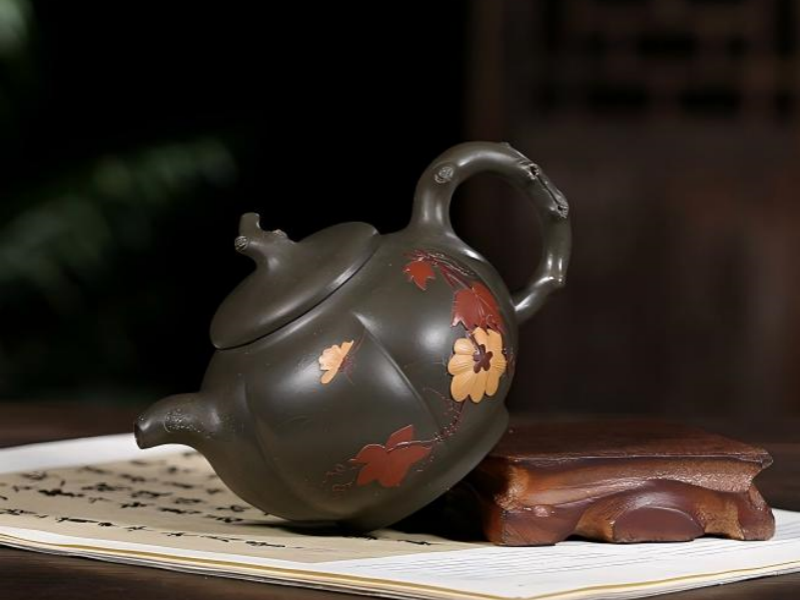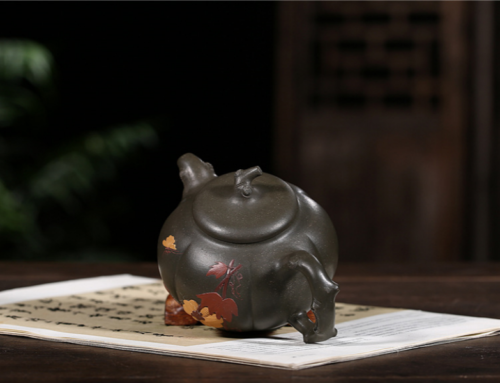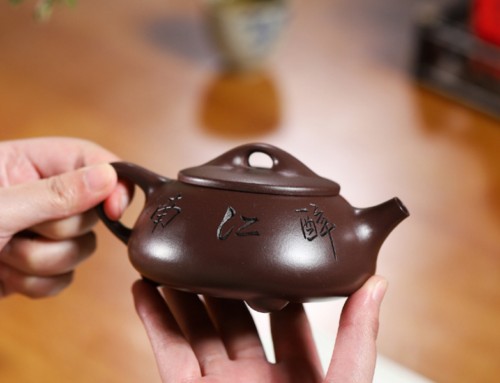History and Cultural Value of Yixing Pots
Introduction
Yixing pots – the name is often heard by tea drinkers and collectors around the world. The pots possess high artistic, traditional and cultural value and are known for their special clay and unqiue handcraftsmanship, crown jewels of Chinese teaware. But why are Yixing pots held in such high regard within tea culture? What distinguishes them from common ware, and how have they influenced the way people enjoy tea? For starters, Yixing pots are made from a special clay known as zisha that is only found in Yixing, Jiangsu Province, China. The clay’s unique mineral content gives Yixing pots their legendary ability to absorb the fragrance and taste of tea, lending depth and richness to the tea they brew over time. Tea masters often refer to their Yixing pots as their “old friends,” each one seasoned by years of use and scores of tea sessions. Beyond their utility, Yixing pots are imbued with Chinese history and aesthetics. They originate from hundreds of years ago, and their shapes have developed alongside Chinese dynasties, philosophies, and aesthetic movements. Today, a Yixing pot isn’t just bought to make a good cup of tea — it is a way to engage with an ancient tradition that has prized patience, skill, and beauty.
Yixing pots don’t just brew tea — they’re storytellers, each with its own history and character. Throughout this article, you’ll learn how these humble pots have grown into icons of artistry, hospitality, and the soul of Chinese tea drinking.
Origins and Development

Early History of Yixing Pots
The history of Yixing pottery can be traced back several millennia to its origin in the region of Yixing in Jiangsu Province in eastern China. According to archaeological data, the origin of zisha ware can be traced to the Song dynasty, although it is only from the Ming period that we see the rise of the celebrated Yixing teapot. Its reputation and development are closely associated with the cultural, cultural and economic aspects of the Jiangnan region. Artisans used zisha (紫砂) clay from the lands of the region, so named for its purple. containing masses of incredibly fine sandy ore nicknamed “Five colors earth”, used to make stoneware, either “purple sand” clay and manufactured by families in workshop settings. While jianzhan teabowl were prestigious, and blue and white Jingdezhen porcelain the general ware of choice, the less esteemed Yixing clay teapots gradually grew in popularity after the end of the Yuan period. What made Yixing, Jiangsu Province so special? Yixing is near the Yangtze and for centuries its townspeople have been able to rely on abundant, uniform and high-quality clay deposits. Gradually, local potters developed their skills to such an extent that the town became a byword for fine teaware. And as part of the traditions surrounding the increasingly popular loose-leaf tea (for which loose-leaf teapots and cups were required to allow the subtle flavours of the tea to come into play), Yixing slowly found fame far beyond its own borders.
Historical Timeline Table: Key Milestones in Yixing Pottery Era | Milestone | Notable Developments Song Dynasty | Early clay ware production | Basic forms, no teapots Ming Dynasty | First documented Yixing teapots (c.15th century) | Rise of Gongfu tea brewing Qing Dynasty | Artistic innovation, famous masters | Decorative techniques, signatures Modern Era | Global recognition, new designs | Export and international exhibitions
Evolution of Craftsmanship
The artistry behind Yixing pots isn’t just about shaping clay—it’s about a deep understanding of chemistry, physics, and aesthetics. Early potters worked by hand, coiling, pinching, and smoothing the clay without the use of molds. This hands-on approach created pots that were not only beautiful, but also functional. The porous nature of zisha clay allowed tea oils to be absorbed, enhancing flavor with every brew. The craft later developed further when highly skilled craftsmen (now carrying the status of ‘artist’) started to sign their works, turning each pot into a masterpiece and a statement of the potter. Some pots were even chosen by Chinese emperors to be given as gifts to foreign dignitaries. Among the most famous names of Yixing pottery are Shi Dabin, Chen Mingyuan and Gu Jingzhou. Their innovations in carving patterns, poetry and Chinese calligraphy as well as blending of different clays to produce new colours gave new heights to the art form. Case Study: The Pot of Shi Dabin Shi Dabin was yixing great master in late Ming dynasty. His pots were simple and traditional, with a elegance that is in keeping with Chinese style. The pot of Shi Dabin are not only sophisticated toward a single line, single design patter achievement level, in philosophical realm, they also very good fulfilling the principle of the Confucian philosophy of life– the harmony between man and nature. Fun Fact: many yixing pots are handed down through generations meaning many family have pots that over 300 years old. Today’s Yixing potters continue their heritage and infuse it with modern sensibilities in both design and technology.
Cultural significance
How Yixing pots integrate into tea cultures

The Yixing Tea pot is a symbol in Chinese culture. For centuries, Yixing clay has been a staple in Gongfu tea ceremonies in China. The Yixing pot due to its porous nature and zisha clay, helps tea develop stronger aroma and flavor through successive brews using the same tea. Because of its porous nature, the teapot is also able to absorb the flavor of the teas brewed in it, adding depth to the tea maker’s routine and methodology when brewing tea. With successive brews using the same tea, the pot begins to “remember” the taste, smell, and aroma of the tea within its walls. This evolved into the term ‘yanghu’ (pinyin: yǎnghú). The more a Yixing clay pot is used, the more seasoned it becomes, and the more enhanced the flavors are over time. It is considered cautious to use dedicated Yixing clay pots for specific types of tea due to the enhanced absorption factor of the clay, as the pot continues to retain and enhance the flavor of similar teas. What’s so special about Yixing pots? Yixing teapots are well known for their foundation to retain and enhance tea aroma and taste over time, adhering to the tea and pot pairing ideology. The brewer’s methodology using the Yixing teapot, allows tea to naturally breath and interact with hot water and tea finishes, piercing through the bitterness and nourishing the flavor and aroma beneath each tea leaf. Self cultivation in the daily handling and brewing of the tea, helps encourage growth in character and the respect of life.
Gongfu Cha: Here’s how it’s done:
Utilizing Yixing POTS and their absorbent clay, helps the tea reach newer depths of flavor revealing every depth more to the drinker. Tea Master Tao Quan Ren says, “Yixing Tea Pots are meeting history every moment.”
Relevance to symbolism and art
Traditionally Yixing pots are associated with Chinese culture reflecting an emphasis on harmony and simplicity. It’s heritage since the Qing dynasty has been seen in accordance to represent a perceived cultural wisdom of humility, taking into account nature in its own artistic practice. Symbolizing the brewing of nature, many pots with cultural references appear in the form of Chinese poetry engravings and motifs such as lotus leaves, peach, and bamboo. History and cultural nuances have relevant meaning, which is outstanding to an otherwise complicated culture formed centuries ago-a glance into the past and our cultural heritage today. Symbolically both in artistry, Yixing tea ware has formed over hundreds of years of observation from past to present. Artistic features: Since the Qing dynasty Yixing pots have been hand carved in through calligraphy displaying aspects of balance, but also illustrating verses or poetry. Adorning their own names, shape and formation, many have had imprinted upon them personally by the creator, which also go back hundreds of years. As time goes on- Yixing teapots have attracted substantial artistic appeal throughout popular cultivation around the world. Nature has also had substantial influence in the shapes of Yixing pots as demonstrated in the above images. Lotus, plum blossom, peach, and bamboo make a repertoire of common symbolic images portrayed in the design and generation behind each Yixing tea pot. Examples of both its shape and formation may include plum blossom, lotus, peach, and bamboo.

Quick list: The meaning behind some symbolic elements in the design of a Yixing pot
Collectors and tea enthusiasts see Yixing pots as both functional implements and prized works of art. Some pots are reserved to museum displays, others are kept in private collections, and still others are used regularly—all testimony to the genius and spirit of their creators.
Spotting and Collecting Yixing Pots
How to Identify Yixing Pots
As Yixing pots popularity rises, so does the number of knock-offs, counterfeits, and poor quality copies on the market. So how do you tell a Yixing pot from a lookalike? The devil is in the details, and in this case, it’s all about the clay, craftsmanship, and artist’s signatures. What to Look For: Clay: Genuine Yixing zisha clay has a slightly sandy, matte texture with muted earth tones ranging from dark purple to reddish-brown. The pot should have a solid, slightly porous feel. Maker’s Mark: Most authentic pots will bear a stamp or signature. These stamps may be on the bottom of the pot, inside the lid, or under the handle. Weight: A pot should feel good in the hand. The lid should fit snugly, and the spout should pour evenly without drips. Sound: Tap a Yixing pot gently. Authentic pots will make a clear, ringing sound.
Key Yixing Characteristics of a Genuine Yixing Pot | Knock-off or Fake Clay | Gritty, matte, muted Sand | Smooth, shiny, polished Paint Color | Purple, red, ochre | Fake, unnatural Maker’s Mark | Stamp, hand-carved signature | Printed stamp, absent Weight/Balance | Solid Natural | Heavy Unwieldy Sound | Hitting a Zisha Pot’s Crisp metallic tap | Dull thud Sound Test
Tip: When buying a pot, ask about its provenance and maker. Trustworthy sellers will be able to give you a bit of information about the pot and its accompanying certificate of authentication. What to Look for in a Yixing Pot: A Buying Guide
Collecting and Caring for Yixing Pots

For many people, collecting Yixing pots becomes a lifelong hobby. Factors that determine the value of a Yixing pot include: age, maker, rarity, quality of clay and difficulty of design. While some rare pieces sell for thousands at auction, everyday Yixing pots gain sentimental value with each rub of a hand on the handle or each fresh brewed pot. Why Collectors Love Yixing Pots: Every pot develops its own unique patina and flavor the more it is used. Older pots, particularly pots made by accomplished Yixing masters, are considered art pieces. Yixing pots are historic relics that connect the owner to a tradition hundreds of years in the making. Caring for Your Yixing Pot: Don’t Use Soap: Yixing clay absorbs flavors and should never be washed with soapy water. Instead, rinse the pot with water periodically and allow it to air dry. Assign Each Pot to a Single Type of Tea: To keep flavors pure, brew only oolong, puerh, black, or green tea in each pot. Store in a Dry, Safe Place: It sounds obvious, but keep your pots away from creatures, kids, and hot places. A cool, dry, dark space is best.
Quick List: Mistakes to Avoid
Collecting Yixing pots is a hobby millions of tea lovers have shared throughout the centuries. Quote from a Collector: “Owning a Yixing pot means taking care of a piece of living history—every cup of tea adds to its story. If properly identified and cared for, your Yixing pot will bring you joy, flavor and beauty for a lifetime.”
Yixing Pots in the Modern World
Yixing pots have come a long way since gracing the inconspicuous tea tables of Jiangsu. Today, their cultural impact traverses countries, continents, and cultures, appealing to tea connoisseurs, collectors, and even contemporary artists. While Yixing pots still centre Chinese tea culture’s identity, they have also broadened their global footprint. Modern day tea rooms from Paris to San Francisco proudly display Yixing teapots on their shelves, and international tea competitions often feature showcase sessions brewed in the iconic vessels.
Global impact:
“Literally summoned me back to the rocky riversides of my hometown.” – Tony, tea connoisseur, reviewing Yixing pot
Contemporary trends and challenges
Despite the enduring foundations of Yixing worksmanship, newer generations of craftsmen are constantly exploring new silhouettes, textures, and motifs. Some deviate further, combining traditional craftsmanship with modern aesthetics to create pots that delight both hobbyists and purist collectors alike. The global tea movement has inspired a modern resurgence in demand for authentic Yixing pots, alongside reinventions in brewing techniques.

Modern innovations:
At the same time, booming interest and popularity has given rise to its own share of challenges. The increased demand has filtered down to the authenticity of zisha clay, compounded by intrigues of over-mining and counterfeit production. In some workshops, imported clay blends with local material to preserve its exclusivity in quantity, while other retailers rely on mass production techniques to meet demand, at the cost of quality. Consequently, pot connoisseurs tend to consider provenance and craftsman reputation high purchase priorities when acquiring a new work of art.
Modern vs. Traditional Yixing Pot Features Feature | Traditional Yixing Pot | Modern Yixing Pot Clay Source | Local, pure zisha | Mixed, sometimes imported Craftmanship | Hand-built, artisan-signed | Machine-made, sometimes unsigned Design | Nature-inspired, classic | Innovative, experimental Value | High, especially for old pots | Varies; some limited editions high
A contemporary Yixing pot recently sold on a digital auction for over $8,000 – co-designed by a young local artisan alongside a French ceramicist. The pot was praised for its “collaborative spirit – part Eastern tradition and part Western innovation”. It continues to claim the attention of collectors around the world. “We look to the past and honour it, yet find new things to shape the future – every pot isa bridge between cultures.” – Modern Potter Despite the challenges, Yixing pottery’s continued artistry and tradition continues to inspire generations ahead. Whether it rests on a collector’s top shelf, or in a workshop studio for daily use, the unassuming teapot is ultimately its own living testament to the long-lasting spirit of tea.
Are teapots the only form that zisha come in?
While Yixing pots are the undisputed stars of the show, Yixing clay’s utility extends well beyond the traditional teapot. Artists and craftspeople use Yixing to make cups, vases, figurines, incense holders and even jewelry. More recently, contemporary designers have started experimenting with Yixing for modern home decor—think minimalist planters, abstract art objects and desk accessories—expanding the material into new forms while keeping the tradition relevant and inviting a new generation of appreciators.

Conclusion
The History and Cultural Significance of Yixing Pots is more than just a story of clay and artistry. It’s a journey of how a simple teapot became a beloved symbol in tea and art, spanning centuries and continents. From their roots in the heartland of Jiangsu Province to their esteemed place in Gongfu tea ceremonies, Yixing pots have made an indelible contribution to Chinese culture— and now, international tea culture as well. How do Yixing pots remain relevant in our contemporary world? Firstly, they remain linked to ritual and mindfulness. Tea brewed in Yixing is never done in a rush; the very act of brewing encourages you to slow down, smell the flowers, and drink in the intoxicating fragrances and shades of taste that only bunsen’d clay can reveal. Hand-shaped and pinched together by an expert craftsperson, each pot is of generations. Secondly, they are unequaled as collectible art objects. The very best Yixing pots – those crafted at the hands of the leading potters – are collected not simply for their functionality but for their beauty and historical value. They continue to be acquired by museums, at auction by private collectors and at staggering prices within China itself by its new, affluent, art-hungry middle class, who sometimes treat them more as living works of sculpture than vessels for steeping leaves.












